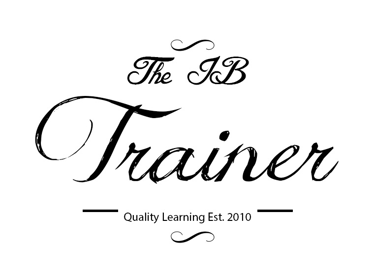The Ultimate Guide to Stakeholder Conflicts
Master stakeholder conflicts with real Tesla, McDonald's & Netflix examples. Essential IB Business Management guide with current case studies, mapping techniques & resolution strategies.
IB BUSINESS MANAGEMENTIB BUSINESS AND MANAGEMENT MODULE 1 INTRODUCTION TO BUSINESS MANAGEMENT
Lawrence Robert
9/29/20256 min read


Everyone Wants to Rule the World: The Ultimate Guide to Stakeholder Conflicts
You're planning the ultimate group holiday with your mates, but everyone wants different things. Some want a budget-friendly trip to Brighton, others are dead set on an expensive week in Ibiza, your environmentally-conscious friend insists on somewhere you can reach by train, and that one mate who never stops working wants WiFi everywhere. Does it sound familiar? The world of stakeholders is full of conflicts - except instead of holiday destinations, we're talking about massive companies trying to keep everyone happy whilst making serious money.
IB Business Management Real-life Example:
The Great Tesla Drama: When Your CEO Goes Rogue
Let's kick off with the absolute chaos that's been unfolding at Tesla. Imagine you're a shareholder who bought Tesla shares because you believed in electric cars and saving the planet. You're watching your investment grow beautifully, and then suddenly your CEO Elon Musk decides to become the world's most controversial social media personality, spends £44 billion buying Twitter (sorry, "X"), and then gets so politically involved that he's literally advising the US President.
In early 2025, Tesla shareholders have been properly wound up. Some investors submitted proposals demanding that company leaders (ahem, Elon) stop making political statements because it's affecting the brand. Think about it - if you're a Tesla shareholder, you probably just want the company to sell more cars and make you money. But Musk's political activism means some people now associate Tesla with his controversial tweets rather than with brilliant electric vehicles.
Meanwhile, Tesla employees are caught in the middle. Over 300,000 workers depend on the company for their livelihoods, but their CEO's antics are creating workplace tension. Some employees love working for a "visionary," others just want to clock in, build cars, and go home without their workplace being front-page news every week.
Tesla's board approved giving Musk a compensation package worth potentially over $1 trillion (yes, you read that right - trillion with a T). Shareholders are now voting on whether their CEO deserves to become the world's first trillionaire whilst some of them struggle to afford the rising costs of Tesla shares.
This is stakeholder conflict in its purest form - and it's happening right now.
IB Business Management What Are Stakeholder Conflicts?
Right, let's break this down properly. Stakeholder conflicts occur when different groups with interests in a business want completely different things. It's like that group holiday situation, but with billions of pounds at stake and actual legal consequences.
Think of any business as having multiple groups of people (stakeholders) who care about what happens to it:
Owners / Shareholders: Want maximum profits and share price growth
Employees: Want job security, decent pay, and good working conditions
Customers: Want quality products at rock-bottom prices
Local communities: Want jobs but not pollution or traffic chaos
Suppliers: Want to get paid quickly and at full price
Environmental groups: Want companies to save the planet (expensive!)
Government: Wants tax revenue and compliance with regulations
The problem? These groups almost never want the same thing at the same time. It's literally impossible to keep everyone completely happy.
IB Business Management Real-life Example: McDonald's The Great Diversity Debate
Here's another cracking example from 2024-25. McDonald's has been implementing diversity programmes - setting targets to hire more women and ethnic minorities in leadership roles, and spending billions with minority-owned suppliers. Sounds reasonable, right?
Well, Strive Asset Management, a shareholder group had something to say about that. They've written angry letters to McDonald's management claiming these diversity programmes are "value-destroying and potentially illegal." Their argument? McDonald's should focus purely on making money for shareholders, not on social causes.
But in reality, many of McDonald's employees, customers, and communities actually love these diversity initiatives. They see them as McDonald's being socially responsible and creating opportunities for underrepresented groups. Meanwhile, other shareholders argue that happy, diverse employees and inclusive marketing actually increase profits by attracting more customers and better workers.
So who's right here? That's exactly the point - they all have valid interests, but they conflict massively.
IB Business Management Real-life Example:
The Netflix vs Disney+ Content Wars: Everyone's Fighting Over Your Attention
The streaming wars give us another brilliant example of stakeholder conflicts playing out in real time. Netflix has been spending about £17 billion a year creating content, whilst Disney+ takes a more calculated approach, focusing on massive franchises like Marvel and Star Wars.
Who wants what?
Content creators want creative freedom and fair pay
Shareholders want profitable growth and reasonable spending
Subscribers want unlimited amazing content for practically nothing
Traditional TV networks want to protect their old business models
In 2024, we've seen these conflicts explode. Netflix introduced cheaper ad-supported plans (shareholders loved the extra revenue, but subscribers hated the ads), whilst Disney+ has been bundling services together (convenient for some customers, confusing and expensive for others). Content creators have been caught in licensing battles, with some shows ping-ponging between platforms as companies fight over exclusive rights.
The Science Bit: Stakeholder Mapping
Now that you've seen these conflicts in action, let's look at how businesses actually manage this chaos. Smart companies use something called stakeholder mapping - basically, a way of figuring out who they should listen to most.
Imagine a matrix with two axes:
Power (how much influence they have over your business)
Interest (how much they actually care about what you're doing)
The key stakeholders are those with high power AND high interest - these are the people you absolutely cannot ignore. In Tesla's case, that's probably major shareholders and regulators. For McDonald's, it's franchise owners and large institutional investors.
Everyone else gets sorted into categories:
High power, low interest: Keep them satisfied (don't annoy them)
Low power, high interest: Keep them informed (they care, but can't hurt you much)
Low power, low interest: Monitor occasionally (don't waste time)
IB Business Management How Do Companies Actually Handle These Conflicts?
When stakeholders are proper kicking off, businesses have several tricks up their sleeves:
1. Get a Referee (Conciliation Services)
Sometimes you need a third party to help everyone reach a compromise. Think of it like getting a neutral mediator when flatmates can't agree on who ate whose yoghurt - except with millions of pounds at stake.
2. Bring in the Judge (Arbitration)
This is the nuclear and explosive option - get an independent arbitrator to make a binding decision that everyone has to accept. It's like asking your mum to settle an argument between siblings, except legally binding.
3. Launch a Charm Offensive (Public Relations)
Companies often hire PR teams to manage their image and communicate better with different stakeholder groups. Tesla's constantly trying to explain Musk's latest antics, whilst McDonald's publishes detailed reports about their diversity initiatives.
4. Show Me the Money (Financial Rewards)
Want employees to support potentially controversial changes? Link their bonuses to company performance. If the business does well despite the conflict, everyone wins financially.
5. Give Everyone a Voice (Representation)
Some companies put employee representatives on their boards or include union leaders in major decisions. It's like having a class representative who actually gets listened to.
The Power Game: Who Actually Wins?
Stakeholder conflicts usually come down to bargaining power. The group with the most leverage tends to get their way.
Employees backed by powerful unions (like those representing Amazon warehouse workers) can force (And I mean literally force) better working conditions. International environmental groups like Greenpeace can create massive PR headaches that cost companies millions. Meanwhile, major institutional investors (pension funds, etc.) can literally vote out entire boards of directors.
One of the problems is that many people wear multiple hats. Netflix employees often own company shares, so they're both workers AND shareholders. McDonald's franchise owners are technically separate businesses, but their success is completely tied to the main company's performance.
Is this Relevant for Your IB Business Management Exams?
Understanding stakeholder conflicts is not just about passing your IB Business Management exam - it's about understanding how the world actually works. Every major business decision creates winners and losers, and the companies that survive are the ones that manage these conflicts cleverly. In other words, there is always going to be conflicts.
When you're analysing IB Business Management case studies, always ask:
Who are the different stakeholder groups?
What does each group actually want?
Which groups have the most power?
How is the company trying to balance competing interests?
What could go wrong if they ignore certain stakeholders?
Remember, there's rarely a "perfect" solution that makes everyone completely happy. The best companies are those that find creative ways to align different interests or make trade-offs that most stakeholders can live with.
The Bottom Line: Stakeholder conflicts aren't a sign of business failure - they're completely normal and inevitable. The companies that thrive are those that acknowledge these conflicts exist, map out their stakeholders properly, and use smart strategies to manage competing interests. Sometimes that means making tough choices, sometimes it means getting creative with win-win solutions, and sometimes it just means being brilliant at communication.
Just like that group holiday where you eventually compromise on a weekend in Amsterdam with budget flights but decent accommodation - the best outcomes often come from acknowledging everyone's needs and finding a middle ground that works well enough for everyone involved.
Stay well,
IB Complete Support Courses, a new generation of affordable support materials directed at IB students seeking grades 6 or 7.
© Theibtrainer.com 2012-2025. All rights reserved.
